https://kpfa.org/episode/the-herbal-highway-june-9-2016/
|
Stephen was interviewed on a recent Herbal Highway radio broadcast from KPFA 94.1 in Berkeley about Thirdroot Community Health Center, herbal healing, and health justice. Listen to him and Julia Bennett below:
https://kpfa.org/episode/the-herbal-highway-june-9-2016/
1 Comment
 Winter is the time to ferment! The cooler temperatures are perfect for slowly-seasoned fermented vegetables. My roommate has a Harsch Crock - an amazing lactic fermentation vessel that is no longer being made! The key to this crock is a a water seal around the top that allows fermentation gases to escape but no mold/bacteria to get in (see pictures above and below). Luckily other companies are following suit and making similar vessesl, but the Harsch will always have a place in my heart. My friend and cofermentor Angela Davis of Nourishing Works recently did a fermentation workshop at Thirdroot. She has years of experience working in holistic health and fermentation. Her workshop - Sour Power! (great name right?) was held at Thirdroot last weekend. Angela gave me a jar of her lactofermented Tumeric Kimchi and I was inspired to make some sauerkraut with her recipe. I quadrupled the recipe for a 5 liter fermentation vessel, but you can use mason jars or whatever else to ferment the mixture. The fun part is adapting the ingredients to whatever your tastes are. I find that I sometimes use too much salt so I definitely measure that, but everything else I just kinda throw together: Ingredients: 1 large head (approx 2lbs) green or red cabbage, cored and finely shredded (I used 4 heads for a 5 liter crock and could have put in more) 1 large organic apple shredded 1 tablespoon caraway seeds (I always add more, love it!) 1 teaspoon juniper berries (Hate them, but they make it taste better) 4 teaspoons sea salt (per head of cabbage) * Chop, shred or grate cabbage. Sprinkle salt on the cabbage in a bowl as you go. The salt pulls water out of the cabbage and makes the brine. Be patient, it takes 15-30 minutes of time/prodding (see below) * Knead and squeeze the cabbage and salt for 5-10 min - the cabbage should be limp, translucent and release its juices easily. The brine should be a-flowing! * Put the cabbage in your fermentation vessel - a crock, a mason jar, etc - a little bit at at a time, and pack it down with your hand or wooden spoon. This pushes out air bubbles and pushes the brine to the top of the jar. * Continue putting the cabbage in the vessel and you should see the level of brine increase. If you don't get enough brine, add salt water to bring the brine above the cabbage. I almost never have to do this. But if you do, add one tablespoon of salt to one cup non-chlorinated water (dissolved) and mix it in. *Leave at least 1-2 inches at the top of the vessel for the cabbage to expand * Place a couple large outer leaves at the top to force the chopped cabbage below the brine *Wipe away any loose cabbage and loosely close the top of the mason jar (so gases can still escape) or put the lid on your cool Harsch crock :) * Leave in a cool, dark place. Best temp is 65-68 degrees. Keep an eye on your baby, checking to make sure the brine is still above the cabbage (if mold forms, scrape it off, don't worry! it can't grow below the brine, it's too acidic) * You KNOW when something has gone bad with the fermentation process. It smells nasty and way different than good krawt. This has only happened to me once but I will remember it forever. Usually, everything goes fine! in 5-7 days you will have the beginnings of a sour krawt, but you can leave it more for more sourer-sourer stuff. *If brine evaporates - add salt water. *When your krawt is a good sourness, take off the top big cabbage leaves and put it in the fridge - this slows the process. *Enjoy! It will last about 6 months-1year in the fridge. You can see what my krawt looked like below: the brine is still a little low but the more I filled it the higher it got. 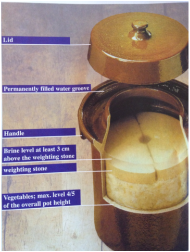 My favorite health benefits of lacto fermented foods: * Increased digestibility, vitamin and enzyme content * Supports a healthy immune system * Adds lactic acid and beneficial bacteria To your health! Email me if you have any questions about the fermentation process, and thanks to Angela at Norishingworks.com 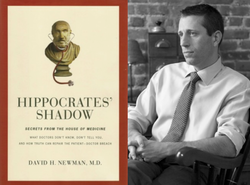 I recently read the above book after seeing the Ted talk by the author, David Newman. The byline of the book is "What doctors don't know, don't tell you, and how truth can repair the patient-doctor breach." Another expose by some white male doctor into the crumbling allopathic care system? I've seen that before! However, this book goes beyond the basic -lets scare the shit out of you through telling you how screwed up the US medical system is- and tries to provide solutions to the real facts that allopathic care is getting worse at supporting health (they do a hell of a job at emergency care). The main idea that I got out of this book is in regards to a big part of my practice (and something the care providers around me have taught me) which is intention. The intent of whatever you do, or make, or give can be where the healing is. I choose to elaborate on ideas he raised that matter to me as a massage therapist and herbalist (though of course, issues like how ineffective CPR is for the majority of people is important to me too) but I recommend reading the book in full BACK PAIN As someone who sees a lot of clients for back pain (and experience it myself) this bit hits close to home. 70% of humans experience severe back pain sometime in their lives. However, what causes back pain is a mystery to modern science. The most common problems physicians see on MRI's that may contribute to back pain - herniated, ruptured, and bulging disks - also occur in the same frequency as people who are not experiencing pain. Perhaps the location of the injury is important? Science hasn't even gotten that far - they simply see an injury, see that you have back pain, and schedule surgery. Surgery on these injuries only has a 50% success rate. What's a skeptic to do, but just do yoga, get massage, take anti-inflammatory herbs, nervines, and anti-spasmodics, and talk with a osteopath or chiropractor? KNUCKLE CRACKING Apparently, modern medicine has no idea what makes knuckles crack. No, I'm not joking, there are various theories, but nothing is proven. Despite numerous studies and meticulous data-collection, everyone has a different theory. This will be my new question to ask a care provider, to see if they make something up .. COUGH Both over the counter and prescription cough medicines "none of [them] works any better than a placebo, and none ever has." Interesting .. this is starting to allude to the fact that a placebo must have other factors at play. When I give people wildcherry bark with honey and lemon, is it a placebo? Maybe, but there's something else in the medicine that can't be explained. MIGRAINES Common prescription medicines for migraines don't work very well (for most people). What's a better option? (Note: this is a sideline, David Newman does not recommend herbs here) = Give them antiemetics (anti-nausea) medicine (try ginger tea or caps at the first sign of a headache) for acute migraines, plus pain medication. Apparently when you get rid of the nausea associated with migraines, it calms the body down enough to dull the pain. ANTIBIOTICS Often cause more harm than good. Even when a bateria is present and patients are not mis-diagnosed or demand antibiotics even though their doctor tells them they don't need them. The amount of yeast infections, diarrea, severe allergies (1 in 400 antibiotic takers have an allergy) and other unnecessary side effects for unnecessary prescriptions causes Dr. Newman to devote an entire chapter on antibiotics. Herbal alternatives? Goldenseal, echinacea, garlic, honey and more herbs can help. Remember you can always take antibiotics later. PLACEBO & INTENTION Often, placebo's work. Often better than their "active" counterparts. However, Dr. Newman goes a little deeper and describes the idea of a "meaning response" - we assign meaning to pills, treatments, diagnosis and rituals of healing. This is the reason why acupuncture (or any procedure) is less likely to work for you if you don't believe in it. A quote from the book that is long but important, and pissed me off a bit too = "It's been argued that some fields of alternative medicine depend largely - perhaps even entirely - on meaning responses. If so, are we to conclude that these methods don't heal? Speak to migraine sufferers who see an acupuncturist for their headaches. They neither know or care that a recent trial found acupuncture for migraines 'no better than a placebo.' In the trial, while acupuncture was not better than a placebo procedure, both were far better than being in the group assigned to the 'waiting list.' where patients never had any contact with acupuncturist. Many migrane sufferers, and many acupuncturists, have found that the headaches are reduced by acupuncture, and they believe in it strongly; therefore, they're right. Whether it is the ritual of administering the procedure or the biological impact of the acupuncture that provides relief is in many ways immaterial to the patients... for patients, speaking to the [practitioner] about what [ailment] is, where it comes from, and what to expect is a meaningful and healing act .. Though Hippocrates may not have known it, the meaning response was likely the core of his practice, and by all accounts his patients loved and revered him. He was a master healer." Perhaps it took me a while to realize this (as a beginning healer) but what I actually massage or herbalize my client with, doesn't actually matter as much as I thought it did. What seems to matter more is the relationship, the giving of hope, the act of listening and holding space for their pain. I might devise a stellar treatment plan, but without the "meaning response" my remedies are much less likely to be effective for my clients. Check the book out! Brooklyn Public Library has it, or you can purchase from Bluestockings Bookstore.  As an herbalist, I sometimes find my private practice to be isolating and limited in scope. When I have questions about a client or want to bounce ideas off of someone, it's hard to find time to talk to other herbalists, when your client wants a program quickly in place for them. Also, if I wanted to open my own storefront to see clients, it would be too expensive and I would have to charge more than is accessible to my communities, and I don't want to work for someone else who would charge more and keep the profits .. So, how do we as herbalists create businesses that are awesome, profitable, and accessible? Try opening a worker cooperative like Third Root Community Health Center in Brooklyn. Third Root was started in 2008 with the radical idea that they would provide accessible, sliding scale care in a setting that was not a nonprofit, where there would be no bosses and no hierarchy. 8 practitioners - yoga teachers, herbalists, acupuncturists, and massage therapists - banded together to raise money collectively to build out a storefront and open their doors as widely as possible for the most amount of folks - through offering services on a sliding scale, by offering scholarships, by holding space for the hard conversations of racism, classism, and other forms of oppression that saturate the healthcare community. Their unofficial motto was 'for us by us' - outreaching to communities least served by holistic care and creating a diverse, welcoming healing space that most people feel better just by walking through the doors. All of the practitioners are also owners of the business, reaping both the rewards and the risks. I joined Third Root 3 years ago while I was being trained as an herbalist and massage therapist. I can't imagine working anywhere else. The collective has grown to be 10 people and I am constantly learning from my fellow worker-owners. The community of knowledge and support I receive on a daily basis is unparalleled in any of my other work enviroments. Herbaly speaking - we have a shared apothecary of more than 100 herbs (would I be able to have this on my own - no way!). Herbalists at Third Root teach workshops and classes together, constantly learning from each other. I get referrals from other practitioners, and I'm able to develop specialties and offer classes in different areas - like addiction/recovery, trans health - commonly ignored by herbal curriculum. Most importantly of all, my clients are happier and better served than if I was a sole practitioner.  You're likely to either love or hate bitter flavors. Spring is the time of change - and to make sure that change flows we need bitters. My first introduction to a custom herbal protocol as an adult (I'd been experimenting on myself for years before that, and my mom often gave us herbs) was a bitter herbal liver cleanse by one of my teachers - Karen Rose of Sacred Vibes in Brooklyn. I came complaining about feeing stuck in the winter, slow, sluggish, lethargic. She gave me Oregon Grape, Yellow Dock, Dandelion & Burdock to take 3x a day for a week. Clearly this decoction did not taste great, but Karen said to choke it down - the taste was important too. I started the cleanse skeptical, but left feeling exactly as promise - FLOW was back, I felt lighter, not craving the heavy winterfoods, and my skin had cleared up. I was a believer in bitters. The herbs helped my liver do what it loves to do - process out impurities and toxins in the body - so in a sense I was just helping my body remember (through bitter flavors) what it was doing all along.  I recently started reading The Wild Medicine Solution by Guido Mase. Guido writes poetically about bitter herbs and their effects in "remedying digestive symptoms, bolstering liver health, and reestablishing blood sugar balance." Exactly all the things you need after a long winter of sluggishness (if you live in the cold climates like I do) and eating a lot of heavy foods. I recommend reading this book for its fusion of science and energetic herbalism and the simple focus on aromatics, tonics and bitters. Simply find your favorite liver root - I recommend yellow dock or burdock if you live in the NE as you can harvest it simply outside your door in most cases - and make a strong decoction of 1 tbsp herb to 1 cup of water simmered, covered, for 20 minutes. Drink a cup 3-4 times a day for a week, and see how you feel. I know it's been a while, but I'm thinking about my favorite winter beverage - Fire Cider! It's been capitalized on by some lovely folks out of Northhampton, but for the hefty price of $15/8oz you can make your own for about $2.
I like this recipe from Mt Rose Herbs: 1/2 cup fresh grated ginger root 1/2 cup fresh grated horseradish root (you can use the stuff that comes in vinegar from the store too, fresh is hard to find in the winter) 1 medium organic onion, chopped 10 cloves of organic garlic, crushed or chopped 2 jalapeno peppers, chopped Zest and juice from 1 organic lemon 2 tbsp rosemary 1 tbsp tumeric apple cider vinegar (Braggs is the best) (this comes later) raw honey to taste Put everything in a quart jar. Place a piece of wax paper of plastic over the lid, so the vinegar doesn't come in contact with the metal. Store in a dark, cool place for one month and remember to shake daily. Strain through cheesecloth and add about 1/4 cup of honey and stir until incorporated. Taste your cider and add another 1/4 cup until you reach the sweetness you like. You can add to seltzer, hot water, or just do shots straight! It's good when you're coming down with a cold, or when you don't want to get one. Fire cider is an herbal supplement to boost the immune system, stimulate digestion, and spice up your winter days.  I'm helping to facilitate a class - Level II herbal studies - with Jacoby of Third Root Community Health Center (where I spend a lot of my time). We took a field trip to the rare book room of the New York Academy of Medicine yesterday to look at herbals from the 15th Century to now. The librarian had set out crumbling texts that were held together with ribbon, that we carefully turned the pages of looking up our favorite plants. I spent a lot of time looking at early-American texts by Samuel Thompson, an early 19th century self-taught herbalist in the Northeast. His favorite plants were by far, lobelia and cayenne. They came first in his materia medica and had pages upon pages of uses.  Datura also kept coming up in my browsing. You can find this plant growing in tree-pits around brooklyn this time of year - wild (or scattered by a moder-day Johnny-Datura?) and growing furiously in late summer. Many a night I've been out late and observed a few datura growing on my walk home through Clinton Hill. The seedpods are spikey and noticable -> and quite beautiful in this drawing. 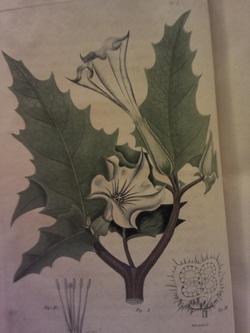 Datura, or Thorn Apple, is a notorious hallucinogen & dangerous. It's beautiful and the flowers open at night (why you see it in the late evening walking home) and has been co-evolving with humans for hundreds of years. Would I recomend you taking some? No - not unless you go to the rare book room at NYAM and read all the texts about this beautiful plant. The early American herbalists and botanists have a lot to say. I'm excited to say hello to this plant on the street - but will still stay my distance from ingesting it even after reading the herbals from 100 years ago.  Reishi - Ganoderma lucidum - lovely adaptogen I'm reading David Winston's "Adaptogens: Herbs for Strength, Stamina and Stress Relief" an excellent overview of the class of herbs that everyone should be taking. Why? They decrease the effects of stress on your body (and stress is broad here - anything that stresses your body - like life!) leading to a longer, more dis-ease free life. I often use traditional chinese medicine (TCM) pattern diagnosis in working with clients. I was excited to see the following chart on 5 classes of the "Superior" herbs in TCM. Superior herbs support the three treasures of our lives - jing (essence, life force), shen (spirit), and qi (movement, vitality). Everyone should be taking them! QI TONICS Increase energy and treat depletion: Asian ginseng, dang shen, eleuthero, ginseng, licorice, and prince seng. BLOOD TONICS Blood builders: he sou wu, lycium (goji berry), rehmannia, dang gui JING TONICS Conserve or strengthen your vital force: asian ginseng, cordyceps, reishi, scisandra YIN TONICS Nourish your fluids, relieve dryness, strengthen lungs, skin and bowels: American ginseng, prince seng, lycium, and shatavari YANG TONICS Use for deficient kidney conditions affecting reproduction & adrenal function: ashwagandha, cordyceps, epimedium, morinda root You don't need an appointment with me to start taking one of these herbs. Go to your local apothecary and pick up whichever herb you find yourself drawn to and experiment on yourself. Not all herbs are right for all people, but by being intentional and noticing how your body responds, you will find the herb that's right for you. I wish you vitality, ease and freedom in your path! another way to improve your cardio health - AORTA CollectiveDid you know massage is a great way to improve cardiovascular health? For people who have lots of stress, testosterone, smoke, or have less-than-perfect diets - massage is a great way to gift yourself some down time, to heal and relax. I just read this great article on how to improve your cardiovascular health, and am inspired to get a massage! http://www.integrative-healthcare.org/mt/archives/2012/05/massage_therapy_12.html Which dried herb pile do you think was recently harvested from the lawn up in Tivoli? That's right - the green one. The pile on the right is chickweed from Mountain Rose herbs in Oregon. No bad blood, but herbs are ALWAYS better if you can harvest or grow them in your local area.
Chickweed is a powerful and common lawn & bike-path side herb. It is best used fresh (sorry dried herbs!) for blood toxicity, fevers, inflammation, and other HOT diseases. An oil or salve can be made to treat skin rashes, eczema and psoriasis. Eaten fresh or in a tea, it is a fabulous spring blood cleanser and weight eliminator (both physically and psychosocially). Go out and find chickweed growing in your lawns and the park - it tastes like spinach and is delicious raw or lightly steamed. Right now it is flowering and you can see the tiny star-shaped flowers below. Enjoy other spring herbs like dandelion, cleavers & violet in a refreshing spring salad - now is the perfect time to munch on these spring cleansers. |
AuthorStephen Rye is a massage therapist, herbalist, gardener, and organizer. Archives
August 2016
Categories
All
|


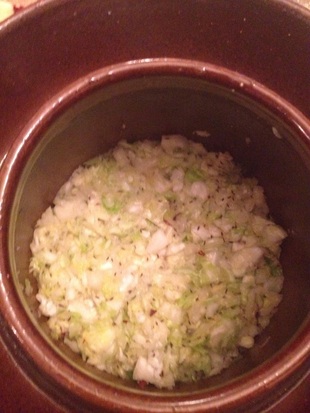


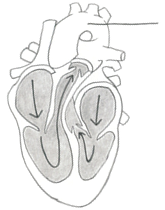

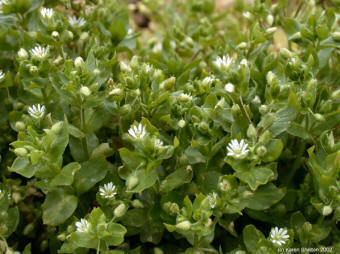
 RSS Feed
RSS Feed